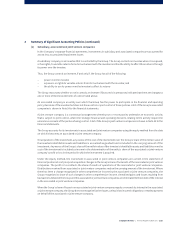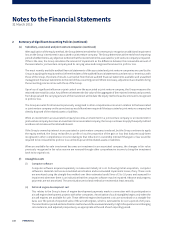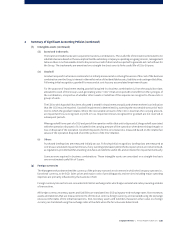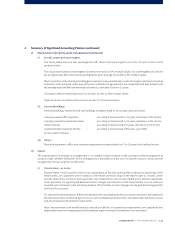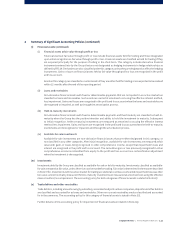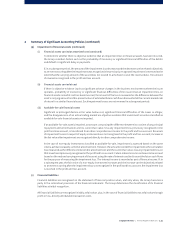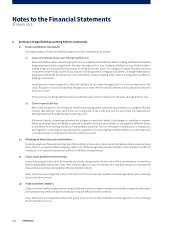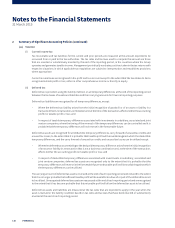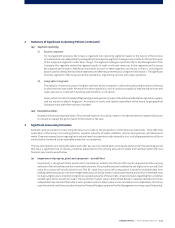Singapore Airlines 2015 Annual Report Download - page 119
Download and view the complete annual report
Please find page 119 of the 2015 Singapore Airlines annual report below. You can navigate through the pages in the report by either clicking on the pages listed below, or by using the keyword search tool below to find specific information within the annual report.
2 Summary of Significant Accounting Policies (continued)
(v) Provisions
Provisions are recognised when the Group has a present obligation (legal or constructive) as a result of a past event, it is
probable that an outflow of economic resources will be required to settle the obligation and the amount of the obligation
can be estimated reliably. Where the Group expects some or all of a provision to be reimbursed, the reimbursement is
recognised as a separate asset but only when the reimbursement is virtually certain. The expense relating to any provision
is presented in the profit and loss account net of any reimbursement.
Provisions are reviewed at the end of each reporting period and adjusted to reflect the current best estimate. If it is no
longer probable that an outflow of economic resources will be required to settle the obligation, the provision is reversed.
If the eect of the time value of money is material, provisions are discounted using a current pre-tax rate that reflects,
where appropriate, the risks specific to the liability. Where discounting is used, the increase in the provision due to the
passage of time is recognised as a finance cost.
Provision for warranty claims is made for engine overhaul, repairs and maintenance of aircra (excluding line maintenance)
based on past experience of the level of repairs.
Provision for return costs to meet contractual return aircra minimum conditions, at the end of the lease terms for the
aircra under operating leases, are recorded equally over the lease terms.
(w) Maintenance reserve
Maintenance reserve relates to payments made by the lessee for maintenance activities undertaken during the lease
period. The Group will reimburse the lessee for agreed maintenance work done as and when incurred. The Group records
the amounts received as maintenance reserve. At the expiry of the lease term, excess maintenance reserve is recognised
in the profit and loss account.
(x) Share capital and share issuance expenses
Proceeds from issuance of ordinary shares are recognised as share capital in equity. Incremental costs directly attributable
to the issuance of ordinary shares are deducted against share capital.
(y) Treasury shares
When shares are reacquired by the Company, the amount of consideration paid is recognised directly in equity. Reacquired
shares are classified as treasury shares and presented as a deduction from total equity. When treasury shares are subsequently
sold or reissued pursuant to equity compensation plans, the cost of treasury shares is reversed from the treasury share
account and the realised gain or loss on sale or reissue, net of any directly attributable incremental transaction costs, is
recognised in the capital reserve. Voting rights related to treasury shares are nullified for the Group and no dividends are
allocated to them respectively.
(z) Frequent flyer programme
The Company operates a frequent flyer programme called “KrisFlyer” that provides travel awards to programme members
based on accumulated mileage. A portion of passenger revenue attributable to the award of frequent flyer benefits, estimated
based on expected utilisation of these benefits, is deferred until they are utilised. These are included under deferred
revenue on the statement of financial position. Any remaining unutilised benefits are recognised as revenue upon expiry.
Singapore Airlines | Annual Report FY2014/15 |117


